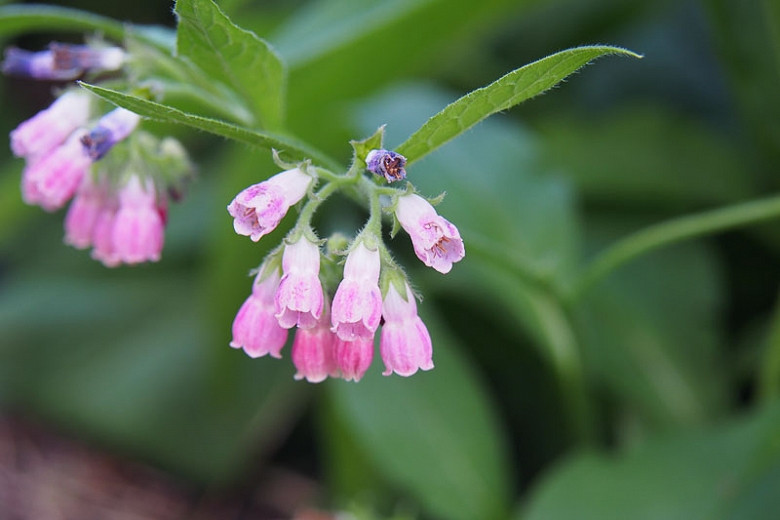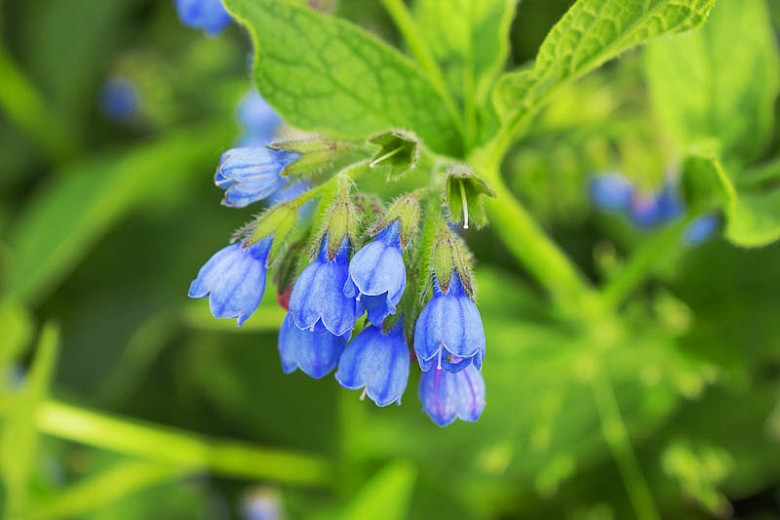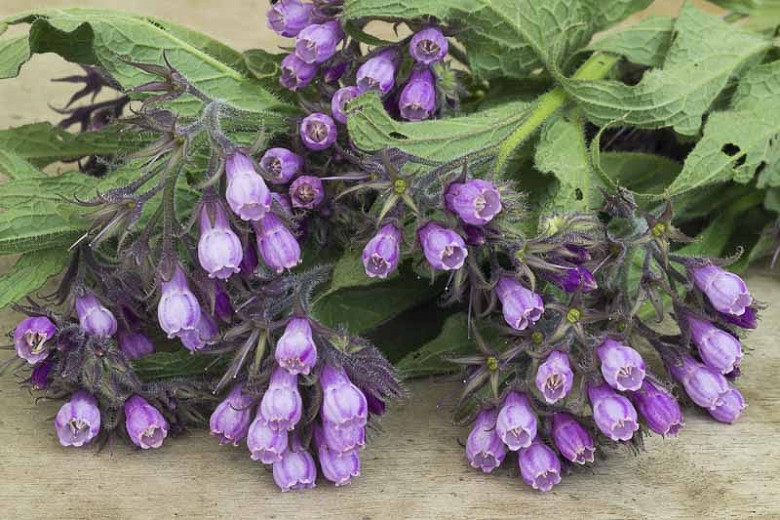Symphytum Rubrum (Red Comfrey)
Symphytum ‘Rubrum’ (Red Comfrey) is a rhizomatous perennial forming a low mound of softly hairy, lance-shaped, dark green leaves. In late spring to early summer, nodding, tubular bell-shaped, deep crimson red flowers appear in drooping clusters. Slowly spreading and less vigorous than most comfreys, Red Comfrey may be used as a ground cover.
Symphytum 'Rubrum' (Red Comfrey) is a rhizomatous perennial forming a low mound of softly hairy, lance-shaped, dark green leaves. In late spring to early summer, nodding, tubular bell-shaped, deep crimson red flowers appear in drooping clusters. Slowly spreading and less vigorous than most comfreys, Red Comfrey may be used as a ground cover. It is also an excellent subject for the wildflower garden. A most suitable plant for moist areas in dappled shade.
- Grows up to 15-18 in. tall (37-45 cm) and 18 in. wide (45 cm). Once established, Comfrey can be very difficult to dig out.
- Thrives in full sun or part shade in moderately fertile, moist, well-drained soils. Appreciates some afternoon shade in hot summer climates.
- Excellent choice for woodland gardens, cottage gardens or wildflower gardens where it can form attractive colonies over time. It makes a good groundcover.
- Easy to grow, disease and pest free
- Cutting back stems promptly after flowering may encourage a possible rebloom and neat, young foliage.
- Propagate by division of fleshy roots in spring. Propagate by root cuttings in early winter. Propagate by seed sown in pots in a cold frame in autumn or spring.
- Ingestion may cause severe discomfort
Requirements
| Hardiness | 3 – 7 |
|---|---|
| Plant Type | Perennials |
| Plant Family | Symphytum – Comfrey |
| Exposure | Full Sun, Partial Sun |
| Season of Interest | Spring (Late)Summer (Early) |
| Height | 1' – 2' (30cm – 60cm) |
| Spread | 1' – 2' (30cm – 60cm) |
| Spacing | 18″ (45cm) |
| Water Needs | Average |
| Maintenance | Low |
| Soil Type | Chalk, Clay, Loam, Sand |
| Soil pH | Acid, Alkaline, Neutral |
| Soil Drainage | Moist but Well-Drained, Poorly Drained |
| Characteristics | Showy |
| Garden Uses | Beds and Borders, Ground Covers |
| Garden Styles | Informal and Cottage, Prairie and Meadow |


